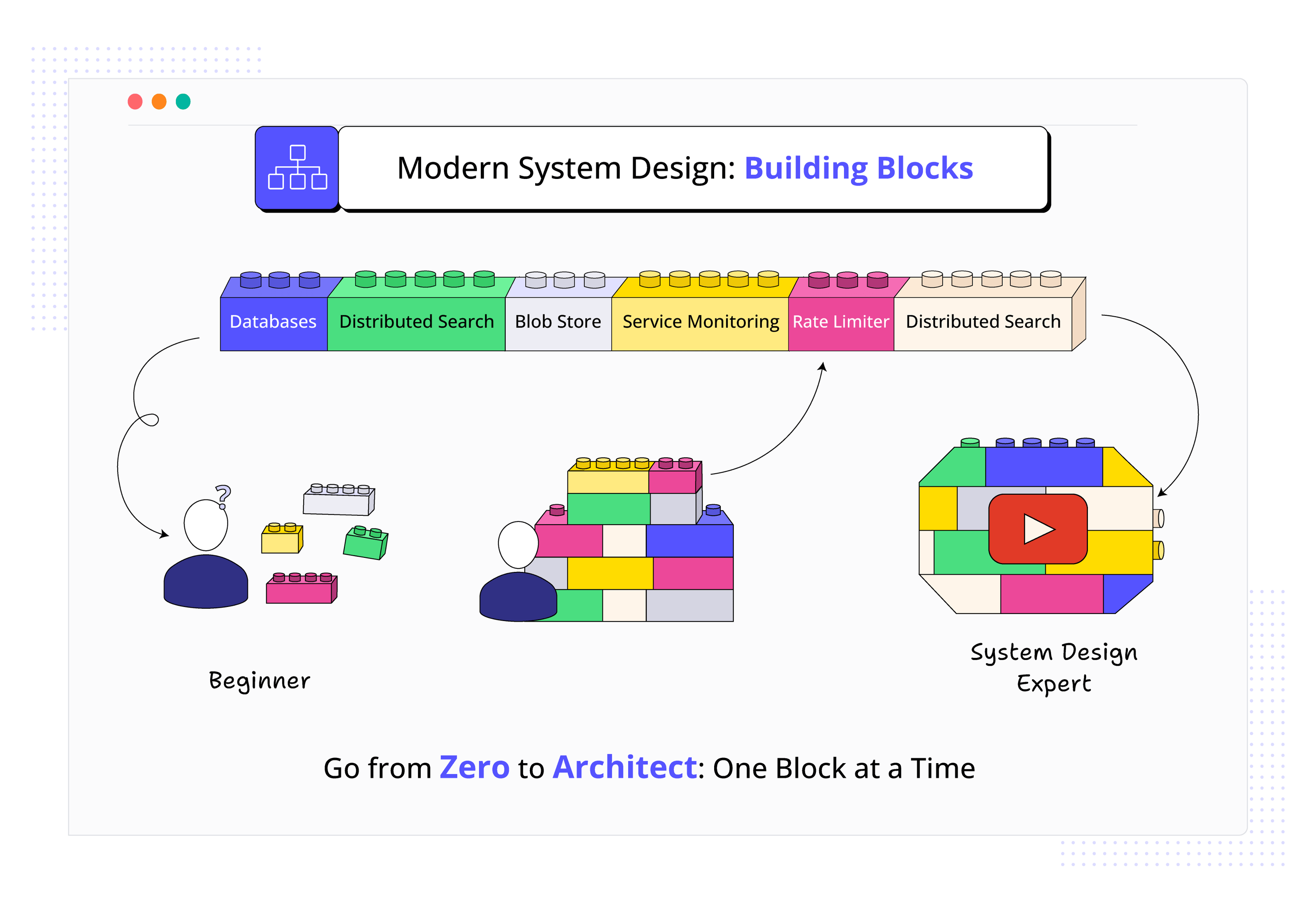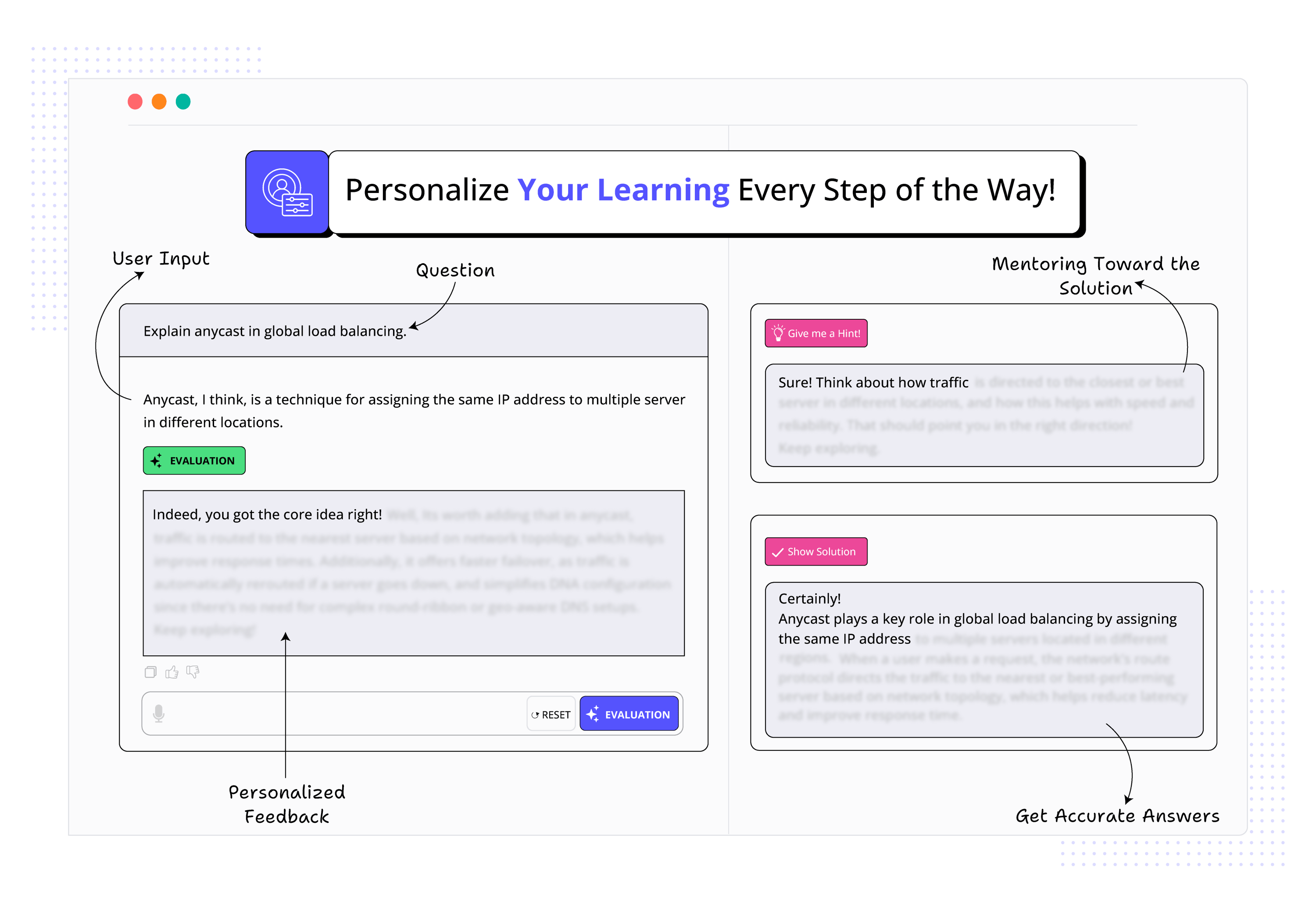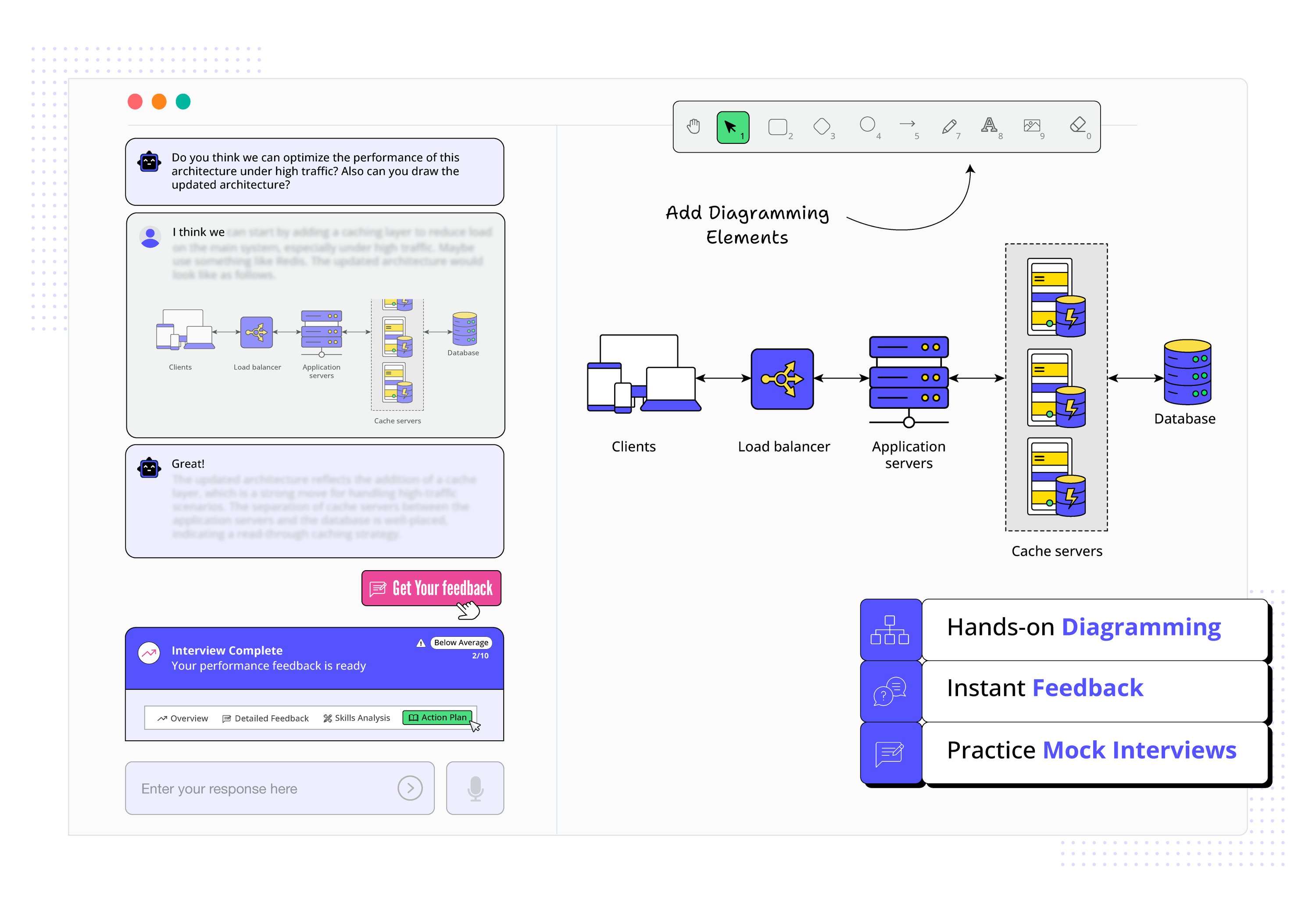Intermediate
26h
Updated this week
Grokking Modern System Design Interview
WHAT YOU'LL LEARN
Show more
Content
1.
Introduction
3 Lessons
2.
System Design Interviews
5 Lessons
3.
Prelimenary System Design Concepts
4 Lessons
4.
Non-Functional System Characteristics
7 Lessons
5.
Back-of-the-Envelope Calculations
2 Lessons
7.
Domain Name System
2 Lessons
8.
Load Balancers
3 Lessons
9.
Databases
5 Lessons
10.
Key-Value Store
5 Lessons
11.
Content Delivery Network (CDN)
7 Lessons
12.
Sequencer
3 Lessons
13.
Distributed Monitoring
3 Lessons
14.
Monitor Server-Side Errors
3 Lessons
15.
Monitor Client-Side Errors
2 Lessons
16.
Distributed Cache
6 Lessons
17.
Distributed Messaging Queue
7 Lessons
18.
Pub-Sub
3 Lessons
19.
Rate Limiter
5 Lessons
20.
Blob Store
6 Lessons
21.
Distributed Search
6 Lessons
22.
Distributed Logging
3 Lessons
23.
Distributed Task Scheduler
5 Lessons
24.
Sharded Counters
4 Lessons
25.
Concluding the Building Blocks Discussion
4 Lessons
26.
Design YouTube
6 Lessons
27.
Design Quora
5 Lessons
28.
Design Google Maps
6 Lessons
29.
Design a Proximity Service/Yelp
5 Lessons
30.
Design Uber
7 Lessons
31.
Design Twitter
6 Lessons
33.
Design Instagram
5 Lessons
36.
Design WhatsApp
6 Lessons
37.
Design Typeahead Suggestion
7 Lessons
38.
Design a Collaborative Document Editing Service/Google Docs
5 Lessons
39.
Design a Deployment System
2 Lessons
40.
Design a Payment System
2 Lessons
41.
Design a ChatGPT System
2 Lessons
42.
Spectacular Failures
4 Lessons
43.
Concluding Remarks
2 Lessons
44.
Free System Design Lessons
14 Lessons
45.
System Design Case Studies
5 Lessons
Trusted by 2.8 million developers working at companies
Yichen Wang
Software Engineer @ Microsoft
Mike Rabatin
Learner
Kshitij Tiwari
Arachnomesh Technologies
Abhishek R
Learner
JR
Learner
Svitlana Valko
Learner
See how Educative uses AI to make your learning more immersive than ever before.
AI Prompt
Code Feedback
Explain with AI
AI Code Mentor
Free Resources
cheatsheet
cheatsheet
cheatsheet
blog
guide



